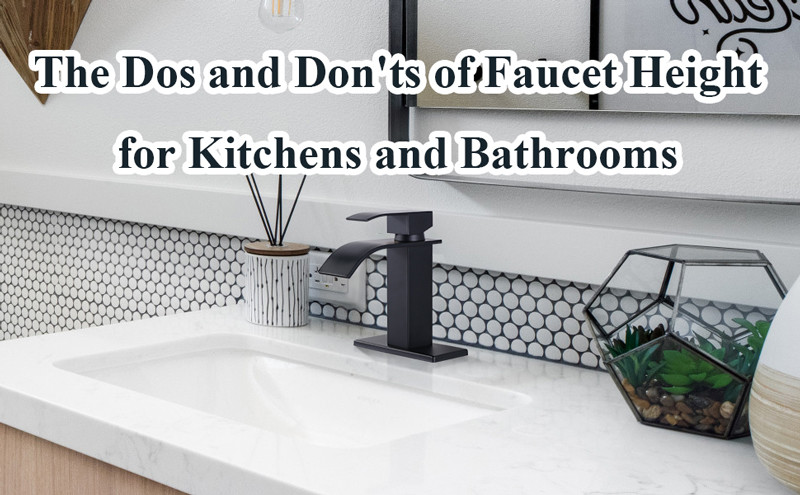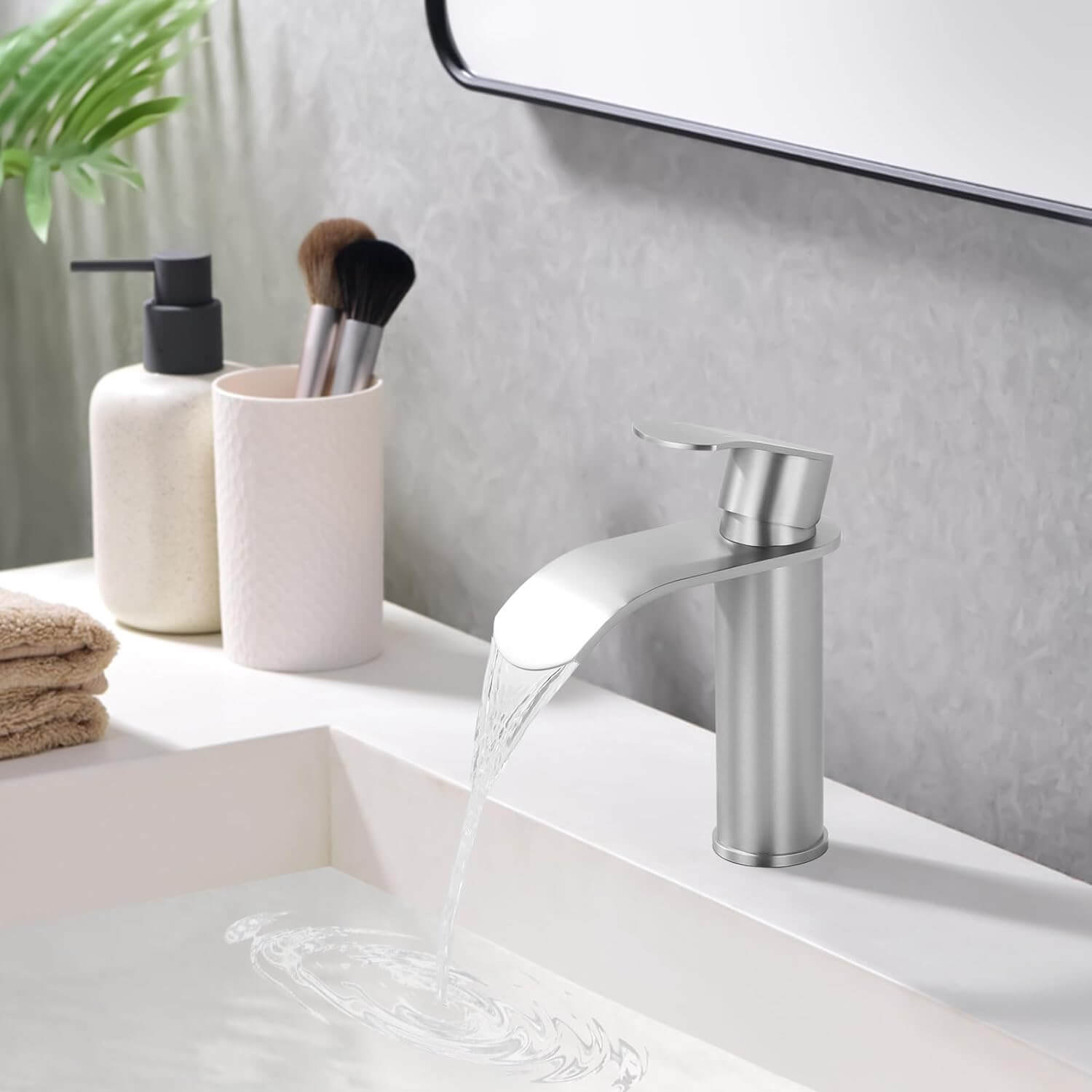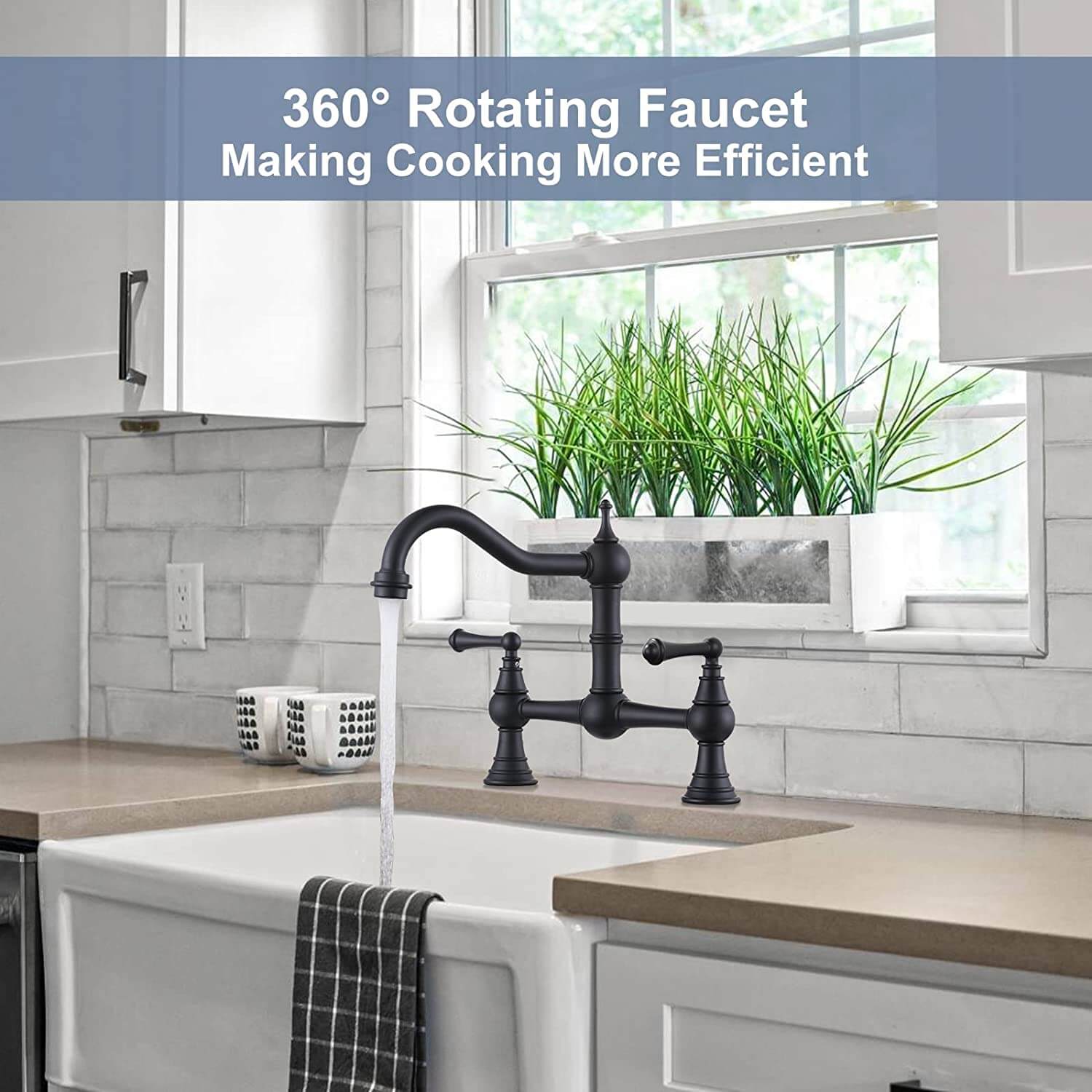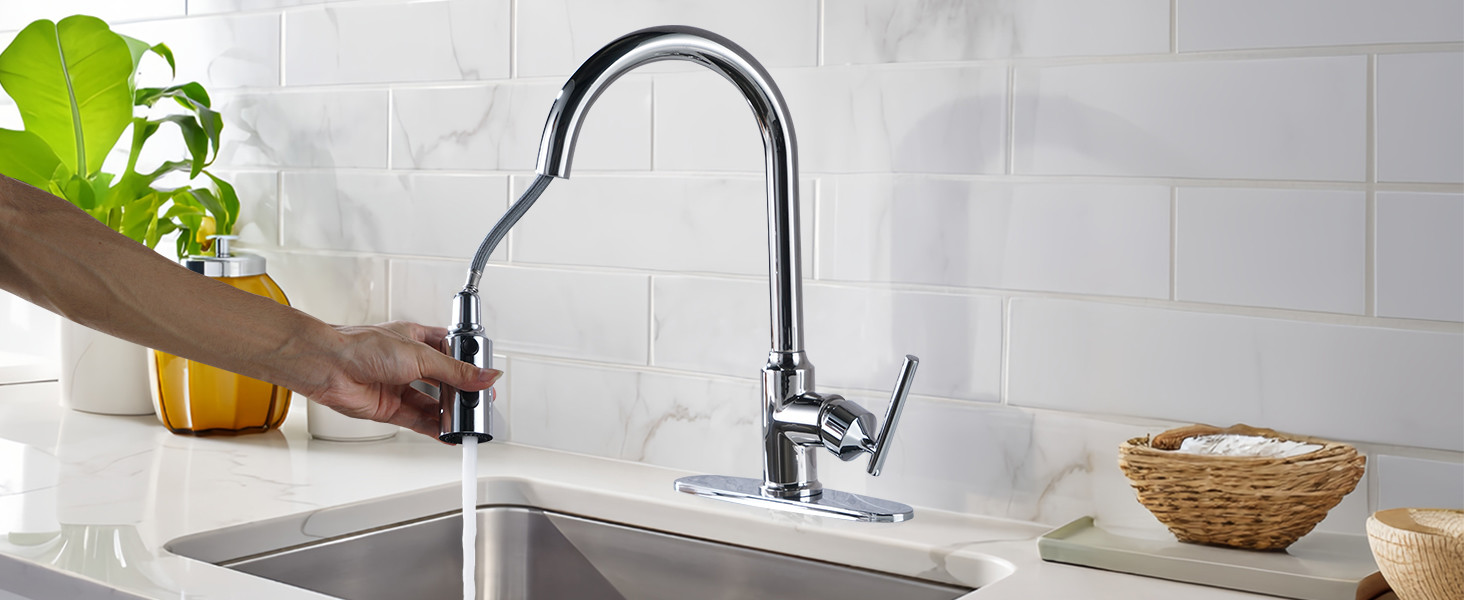
When it comes to kitchen and bathroom design, faucet height might not be the first thing that comes to mind—but it’s more important than you think. A well-chosen faucet height can significantly improve the functionality and comfort of your space, while an improper height can lead to frustration, messes, and even unnecessary strain. Whether you’re installing a new faucet or remodeling your space, getting the faucet height right is key. Let’s break down the dos and don’ts of faucet height for both kitchens and bathrooms.
The Dos of Faucet Height
1. Do Consider Sink Depth and Size
One of the most important factors in determining the right faucet height is the depth and size of your sink. For kitchen sinks, you want to ensure that the faucet is high enough to provide ample clearance for large pots, pans, and dishes. If your sink is deep, you’ll need a faucet with a higher arc to prevent splashing. On the other hand, for shallow sinks, a lower faucet height may suffice.
For bathroom sinks, the depth is less of an issue, but you still want a faucet that provides easy access to the water flow without splashing. Typically, for most bathroom sinks, a faucet height between 4 to 6 inches above the sink rim works well.
2. Do Think About Your Height and Comfort
Personal comfort is a big factor in faucet height. If you’re tall, you might prefer a faucet that sits higher, while a shorter person may find a lower faucet more convenient. In the kitchen, this can affect how easily you can wash dishes or rinse vegetables, so ensure the faucet height accommodates your comfort level. Similarly, in bathrooms, the faucet height should be set at a height that doesn’t require you to bend over or strain your wrist when washing your hands or face.
3. Do Account for Water Flow and Splashing
Faucet height impacts the water flow and splash factor. If the faucet is too low, water can splash out of the sink, making a mess on your countertop. On the other hand, a faucet that’s too high might create unnecessary splashing, especially if you’re using it to rinse small items. Choose a height that strikes the right balance, considering both the faucet’s design and the purpose of the sink.
4. Do Follow Industry Guidelines for Bathroom Faucets
When it comes to bathroom faucets, there are some general industry guidelines to follow. For wall-mounted faucets, the ideal height is usually about 6 to 8 inches above the sink rim, but this can vary depending on the sink type. For vessel sinks, a higher faucet is often recommended, as the basin itself sits above the countertop level. Always ensure that your faucet complements the sink’s design and is comfortably positioned for use.
5. Do Install Faucets at an Appropriate Height for Accessibility
Accessibility is a consideration that’s often overlooked. If you have family members or clients who may have mobility challenges, it’s important to consider a faucet height that they can easily reach. For people in wheelchairs, a faucet should ideally be installed no higher than 36 inches from the floor to ensure accessibility. This may apply to both kitchen and bathroom setups.
The Don’ts of Faucet Height
1. Don’t Install the Faucet Too High in the Kitchen
While a high faucet can look sleek and modern, it can sometimes create issues in the kitchen. If the faucet is too high, it can cause water to spray out of the sink when you’re washing items like plates or pots. Additionally, installing the faucet too high can make it difficult to reach if the spout is far from the sink, especially when trying to fill large containers. Aim for a faucet height that balances functionality with style, without making the sink too prone to splashing.
2. Don’t Overlook the Distance Between Faucet and Back Splash
In both the kitchen and bathroom, the space between the faucet and the backsplash is crucial. If the faucet is too close to the wall, it can make it difficult to operate, especially if you need to adjust the water temperature or pressure. In the kitchen, this distance also affects your ability to clean the backsplash. Ideally, there should be about 2-4 inches of clearance between the faucet and the wall to allow for smooth movement.
3. Don’t Choose a Faucet That’s Too Low in the Bathroom
While it’s tempting to install a low faucet in the bathroom to create a minimalist or sleek look, this can be problematic. If the faucet is too low, it can be difficult to wash your hands or face comfortably without leaning over. It can also create awkward angles, making it harder to use the faucet efficiently. Stick to the 4 to 6-inch height range for most standard bathroom sinks to ensure both practicality and comfort.
4. Don’t Forget to Consider the Overall Design
The height of your faucet should always complement the overall design of your kitchen or bathroom. A faucet that is too tall for a small bathroom can look out of place, while one that’s too short might make the space feel disproportionate. In the kitchen, consider how the faucet works with the rest of your design—does it blend with your cabinetry and counter height? Will it look out of place next to your farmhouse or undermount sink?
5. Don’t Ignore Proper Installation
Even the perfect faucet height won’t matter if it’s not installed properly. Poor installation can lead to improper water flow, leaks, or discomfort. Ensure that the faucet is securely mounted and that the height is set during installation. If you’re unsure about the proper installation, it’s always best to consult with a professional plumber who can adjust the height to suit your space.
Conclusion
The right faucet height is essential for both style and function in the kitchen and bathroom. By considering sink depth, personal comfort, water flow, and accessibility, you can create a space that is not only aesthetically pleasing but also practical. Avoid common mistakes like installing the faucet too high or too low, and make sure it complements the design of your space. Ultimately, the key is finding the balance that works best for you and your needs.
Remember: while faucet height may seem like a small detail, it plays a significant role in the overall experience of using your kitchen and bathroom. So, take the time to get it right, and your faucets will work perfectly for years to come.
 WOWOW Faucets
WOWOW Faucets







您好!Please sign in